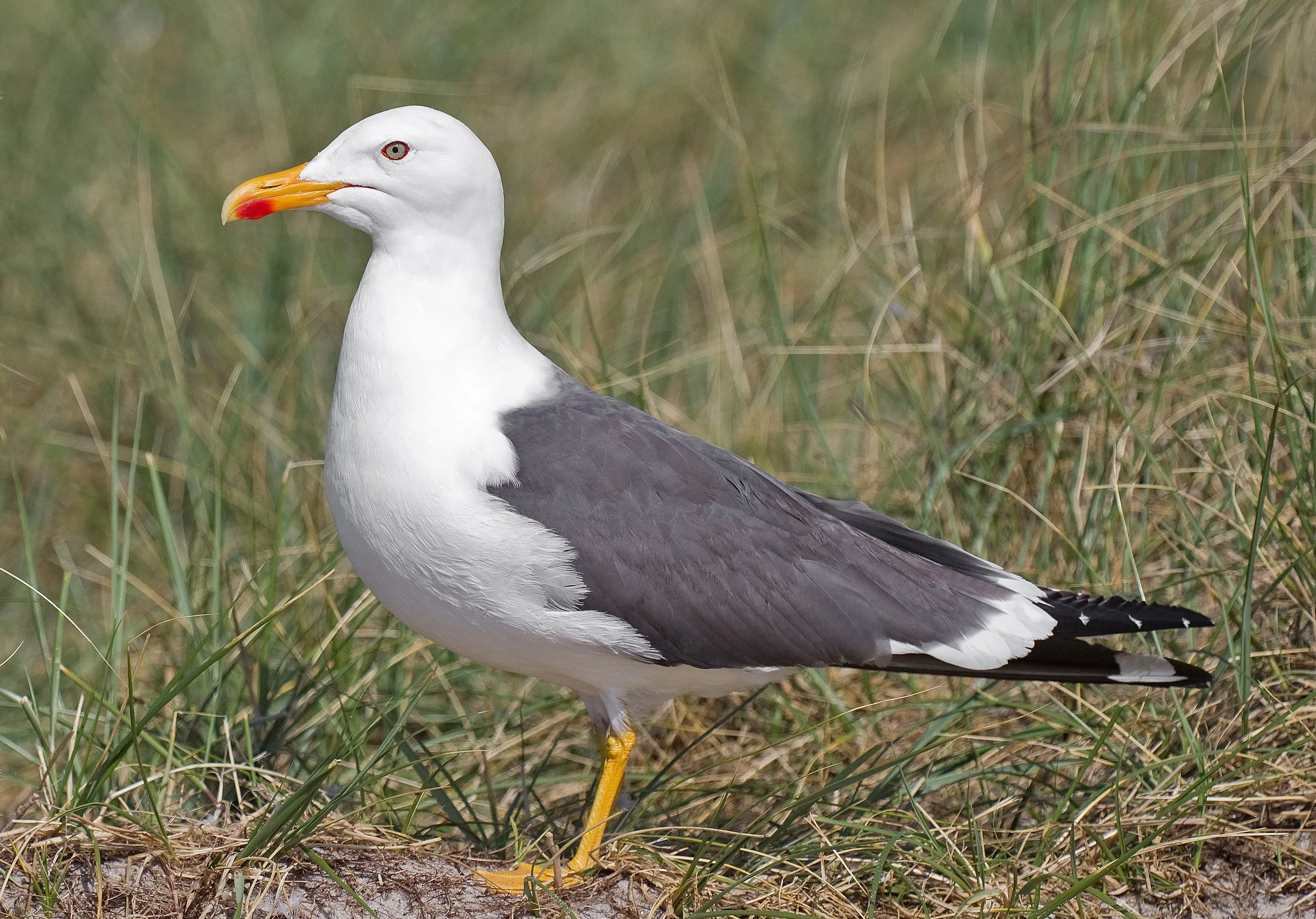
Lesser Black-backed Gull
Lesser Black-backed Gull
Lesser Black-backed Gull
The lesser black-backed gull breeds in northern Eurasia and migrates south for the winter, reaching as far as Japan. These gulls have a distinctive black back and white head. Let's explore the ecology of the lesser black-backed gull and the environment they inhabit.
Lesser Black-backed Gull Basic Infomation

| Property | Value |
|---|---|
| Scientific Name | Larus fuscus |
| Taxonomic Status | ACCEPTED |
| Rank | SPECIES |
| Vernacular Names | Lesser Black-backed Gull |
| Kingdom | Animalia |
| Phylum | Chordata |
| Class | Aves |
| Order | Charadriiformes |
| Family | Laridae |
| Genus | Larus |
| Habitats | Northern Eurasia |
| Conservation Status | Least Concern |

Size
They are about 20 to 24 inches (52 to 60 centimeters) long, making them a medium-sized gull.

Lifespan
They live for about 25 years in the wild.

Distribution
They breed in northern Eurasia and migrate south for the winter. In Japan, they are winter visitors and can be seen along the coasts, rivers, and lakes of Hokkaido and northern Honshu.
Lesser Black-backed Gull Q&A

What kind of gull is the lesser black-backed gull?
The lesser black-backed gull is a medium-sized gull belonging to the family Laridae and the genus Larus.
They have a white head in their summer plumage, and in their winter plumage, they develop grayish-brown spots on their heads. Their bill is yellow with a red spot on the tip, and their legs are pink. Their most distinctive feature is their black back, which gives them their English name, 'Lesser Black-backed Gull.' In Japan, they are winter visitors and can be seen along the coasts, rivers, and lakes of Hokkaido and northern Honshu. They are often seen in flocks with other gulls, but they can also be seen alone.

What do lesser black-backed gulls eat?
Lesser black-backed gulls are omnivores, feeding on fish, crustaceans, insects, earthworms, and seeds and fruits from plants.
They forage for food on coasts, rivers, and lakes. They catch fish and crustaceans while swimming on the surface of the water or by diving down from the air. They also walk on the ground, searching for insects and earthworms. Sometimes, they scavenge for food scraps from humans in fields and garbage dumps.

Where do they raise their young?
Lesser black-backed gulls breed in northern Eurasia, including the tundra, lakes, and coasts.
They create shallow depressions in the ground for their nests and lay 2 to 3 eggs. The eggs hatch after about 3 weeks, and the chicks fledge after about a month. Both parents participate in raising their young.

[Quiz!] Why do lesser black-backed gulls migrate to Japan in the winter?
Lesser black-backed gulls migrate south to warmer regions, including Japan, in the winter because their breeding grounds in northern Eurasia, including the tundra, lakes, and coasts, freeze over.
They spend the winter in Japan, foraging for food on the coasts, rivers, and lakes, and then return to northern Eurasia to breed in the spring. They travel thousands of kilometers during their migration.

[Quiz!] Do lesser black-backed gulls get along with other gulls?
Lesser black-backed gulls are often seen in flocks with other gulls, particularly larger species like the herring gull and the great black-backed gull.
They often associate with larger gulls because the larger gulls are better at catching food, and the lesser black-backed gulls try to steal their catches. Being around larger gulls also provides them with protection from predators. However, sometimes lesser black-backed gulls are chased away or attacked by the larger gulls.

[Quiz!] Are lesser black-backed gulls endangered?
The lesser black-backed gull is listed as 'Least Concern' on the IUCN (International Union for Conservation of Nature) Red List.
This means that they are not currently considered endangered. However, their numbers are declining in some areas, requiring attention. Their breeding grounds in northern Eurasia are facing environmental changes due to global warming. They are also affected by bycatch from fishing and marine pollution. To protect lesser black-backed gulls, we need various measures, such as addressing global warming, reducing bycatch from fishing, and reducing marine pollution.

Would you like to become a part of the 'Animalbook.jp'?
Turn your knowledge into Q&A and share it with the world. ※Publication will be activated after purchase. Let's share information together!
Lesser Black-backed Gull Type of List

Tips for Observing Lesser Black-backed Gulls
- Don't get too close: Lesser black-backed gulls are skittish birds, so if you get too close, they will fly away.
- Don't feed them: Feeding them can make them dependent on humans and can also make them sick or injured.
- Don't litter: Garbage pollutes their feeding areas and can be harmful if they ingest it. Always take your garbage with you.
- Observe them quietly: Loud noises and commotion will scare them away. Observe them quietly.
- Use binoculars: Use binoculars for a closer look at lesser black-backed gulls.
- Don't use flash photography: Flash photography will startle them. Avoid using flash when taking pictures.
Information
Congratulations! You are the first commenter!

Create Your Favorite List!
Lesser Black-backed Gull
Save the animals you love! Build your own list to quickly revisit your favorites later.

Would you like to leave a comment?
※Please note: This is for the purchase of rights to post comments within the article.
Find Your Favorites!
Our shop offers a unique and attractive selection of goods themed around various animals.
Lesser Black-backed Gull References
Lesser Black-backed Gull Introduction of media used

Andreas Trepte, CC BY-SA 2.5, via Wikimedia Commons

Help Enrich Our Animalbook.jp with Your Media!
We are constantly looking to expand and enrich our Animalbook.jp with amazing photos and videos of animals. If you have any media that you'd like to share, please contribute and help us showcase the beauty and diversity of the animal kingdom. Your submissions will be credited and featured in our encyclopedia, reaching a wide audience of animal lovers.


















